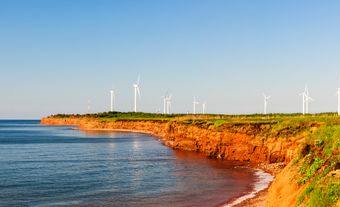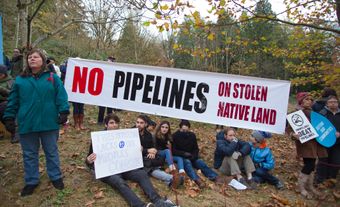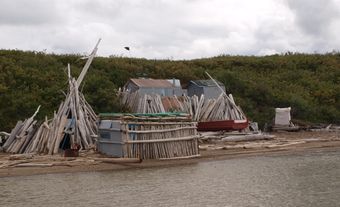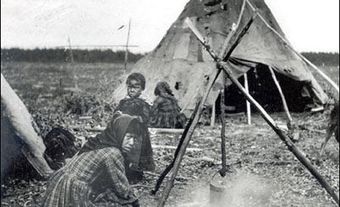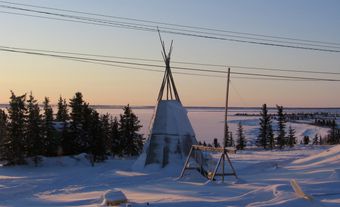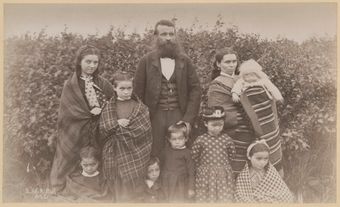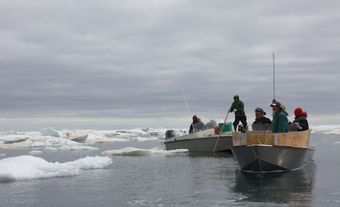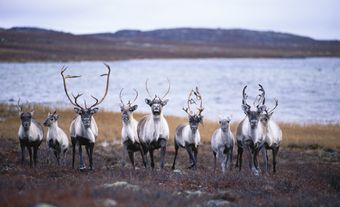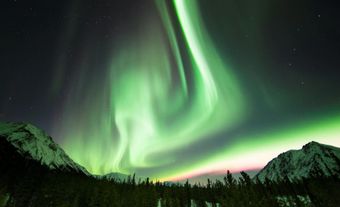In 1974, the federal government formed a royal commission to consider two proposals for natural gas pipelines in the North. Thomas Berger, a judge, led the inquiry. Over the next two years, the Berger Commission assessed the potential impacts of the proposed pipelines. Berger held formal and informal hearings. These included 45 community hearings from the Northwest Territories and Yukon to Southern Canada. His 1977 report made several recommendations. He called for further study and the settlement of Indigenous land claims. He also called for a 10-year ban on pipeline construction in the Mackenzie Valley. Berger opposed building any pipeline across the sensitive caribou habitat of the northern Yukon. The Berger Commission involved the public and included Indigenous views more than any resource-related consultation had done before in Canada.
Click here for definitions of key terms used in this article.
Background
Vast fossil fuel reserves were discovered at Prudhoe Bay, Alaska, in 1968. Government and petroleum industry players began to promote the idea of a pipeline. This pipeline would bring fuel from Alaska to US markets to the south. It would cross Yukon, the Northwest Territories and Alberta. The system would draw from Canadian reserves along the way.
The Liberal government of Prime Minister Pierre Elliott Trudeau created the Task Force on Northern Oil Development in 1968. Its job was to assess the feasibility of such a project. The task force’s work resulted in the federal government’s official policy on pipeline development in the North. This policy, the Northern Pipeline Guidelines, was published in 1970 and expanded in 1972. The Guidelines spurred many engineering and environmental studies. They also prompted public-policy reviews and economic analyses.
The Pipeline Proposals
In the early 1970s, two consortiums proposed building pipelines to carry natural gas through the North.
Canadian Arctic Gas Pipeline Ltd. proposed a route from the Prudhoe Bay fields in Alaska, across northern Yukon to the Mackenzie River delta and then south to Alberta. From Alberta, this pipeline would connect with delivery systems in the United States. The Arctic Gas pipeline would have been the longest in the world (3,860 km). It also would have been the largest-ever private investment in a construction project.
Foothills Pipe Lines Ltd. proposed a shorter route. The initial plan was for a pipeline from the Mackenzie Delta to Alberta. In 1976, however, Foothills began to promote an alternative route. The new route would follow the Alaska Highway, connecting Alaskan reserves with the Lower 48 states.
The impact of these projects on the economy, environment and Indigenous communities of the North would have been significant. Furthermore, building a pipeline over permafrost presented great engineering challenges. Both proposals entailed burying the pipeline, which would disturb the natural temperature of the ground. This would in turn cause a phenomenon called frost heave — an upward swelling of the ground that could damage the pipe.
Commission Appointed
The federal government of Pierre Elliott Trudeau decided to consult with those who lived in the Mackenzie Valley and the Western Arctic. These were the people whom the pipeline projects would affect the most. They included First Nations, Inuit, Métis and non-Indigenous residents. On 21 March 1974, the government appointed Thomas Berger to lead the commission. Berger was a judge of the Supreme Court of British Columbia. In his career as a lawyer, he had represented the Nisga’a in the landmark Calder case. This case had resulted in the recognition of Aboriginal title in Canadian law. Berger had also been an NDP member of the British Columbia legislature and federal Parliament. Trudeau’s Liberals had a minority government that relied on support from the NDP.
Hearings
The commission considered the environmental, cultural, social and economic impacts of the proposed pipelines. Berger was the only commissioner, but he had a supporting staff.
Preliminary hearings began in April 1974. Overview, and then formal, hearings began in March 1975. The purpose of the first round of these events was to set the inquiry’s scope and procedures. The hearings that followed collected the positions of interested parties and expert testimony. During the formal hearings, the parties called witnesses to present evidence. These witnesses could be questioned in cross-examination. Participants in hearings included energy companies, Northern and Indigenous organizations, and environmental groups.
The commission held community hearings from April 1975 to November 1976. It received testimony from people in 35 communities across the Northwest Territories and Yukon. It also heard from people in 10 Southern Canadian cities, from Vancouver to Halifax.
Berger listened to arguments for and against the pipelines. He gathered input from scientists, engineers, hunters, trappers, fishers and businesspeople. Those in favour of pipeline projects said that building them would help the North’s economy and create jobs. Opponents cited concerns about the environment, changes to traditional Indigenous livelihoods and the region’s unsettled land claims.
Report
Thomas Berger issued his report in April 1977. Its two volumes totalled nearly 500 pages. The first volume concerned the impacts of a gas pipeline and energy corridor in the region. The second set out terms and conditions for the construction of such a pipeline.
The report concluded that a pipeline from the Mackenzie Delta down the Mackenzie Valley to Alberta was feasible. Berger thought that it could be built without causing too much harm to the environment. However, he wrote that construction should not begin right away. Berger called for careful planning, further study and the settlement of Indigenous land claims.
Berger firmly opposed a pipeline across the delicate environment of northern Yukon. He concluded that a Yukon pipeline would threaten caribou and other wildlife. The Vuntut Gwich’in relied on these animals for their survival.
The report recommended a 10-year ban on construction. This was to allow time to settle land claims in the Mackenzie Valley. The government accepted this term.
“The North is a frontier, but it is a homeland too…. And it is a heritage, a unique environment that we are called upon to preserve for all Canadians.
“The decisions we have to make are not, therefore, simply about northern pipelines. They are decisions about the protection of the northern environment and the future of northern peoples.”
— Thomas Berger, in his letter presenting his report to the government
Legacy
The Berger Commission marked a turning point in the history of resource development in Canada. It involved the public and foregrounded Indigenous perspectives to a degree not seen before. Berger’s report also presented the concerns of Indigenous peoples in the North in a way that did justice to their humanity.
Amid declining oil and gas prices, the two original Mackenzie Valley pipeline proposals were shelved.
The land-claim settlement process took much longer than the 10 years Berger had foreseen. It continued throughout the 1980s and into the 1990s. By 2000, however, the Inuvialuit, Gwich’in and Sahtu Got’ine had all reached agreements with the federal government. At that time, there was strong support for a pipeline among communities in the Mackenzie corridor. (See Mackenzie Valley Pipeline: Maclean’s). The Inuvialuit Regional Corporation, the Gwich’in Tribal Council and the Sahtu Pipeline Trust formed the Aboriginal Pipeline Group. This group represented First Nations’ interests in a new Mackenzie Valley proposal. (The Dehcho were the only people in the region whose land claim remained unresolved.) That joint venture, the Mackenzie Gas Project, was ultimately cancelled in 2017. (See Mackenzie Valley Pipeline Proposals).

 Share on Facebook
Share on Facebook Share on X
Share on X Share by Email
Share by Email Share on Google Classroom
Share on Google Classroom
